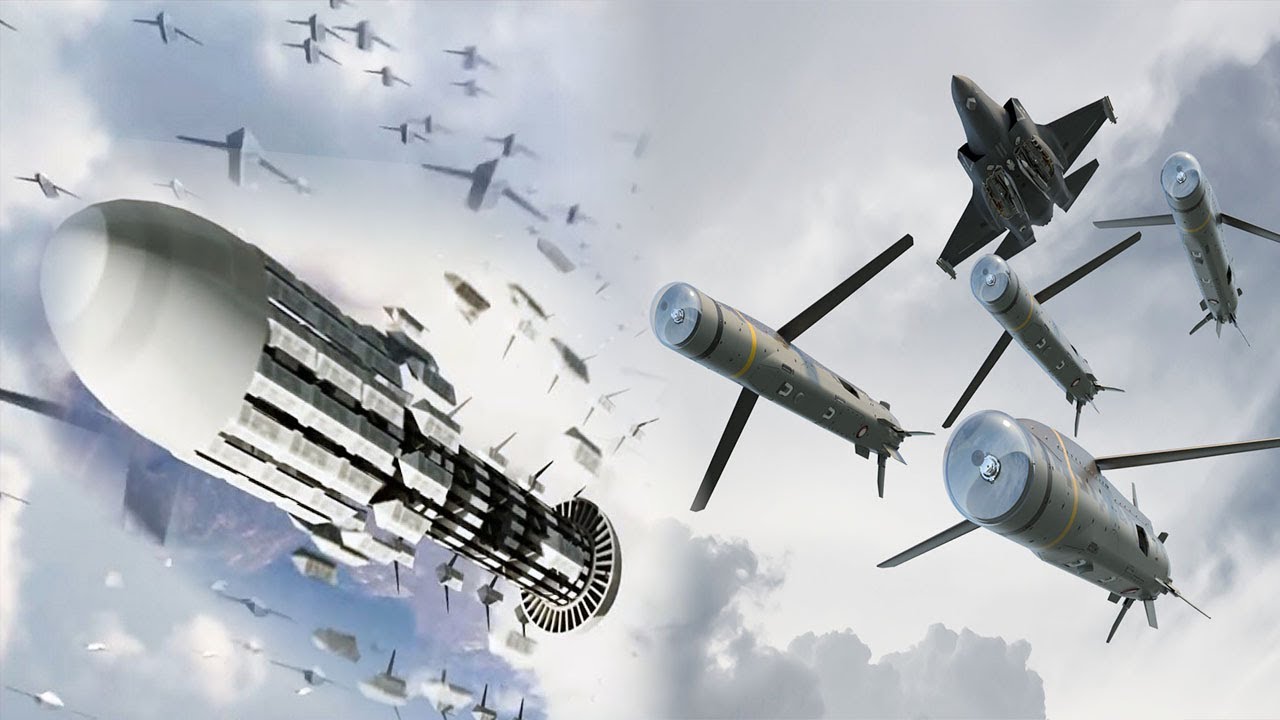The US military is looking to acquire a counter-Anti-Access/Area-Denial (A2/AD) autonomous drone swarm system that can command other swarms in what essentially translates into thousands of unmanned aerial, surface, underwater, and ground drones overwhelming enemy military installations.
Similar to the Russian approach to bait and destroy Ukrainian air defenses using drones and cruise missiles, the Defense Advanced Research Projects Agency (DARPA) envisages the proposed Autonomous Multi-Domain Adaptive Swarms-of-Swarms (AMASS).
This operates at a mammoth “theater level,” where the drones can work independently without requiring constant communication and guidance.
Taken together with the plan to base hypersonic and multiple independent warhead-armed medium-range ballistic missiles around Russia and China, this represents the most serious effort to overturn China’s staggering advantage with long-range missilery that has deterred the US military.
China has the world’s most extensive and diverse range of surface-to-surface, cruise, and anti-ship missiles to keep any attacking force away from Chinese shores.
US Vulnerability To Anti-Access/Area Denial Systems
The DF-16 short-range ballistic missile (SRBM) can reach 1,000 kilometers, bringing all the first island chain targets within reach. The 1,500-2,000 kilometers range DF-21D ‘carrier killer’ anti-ship ballistic missile (ASBM) can hit the second island chains and any approaching US naval flotilla.
The DF-26 intermediate-range ballistic missile (IRBM) can reach 3,500 kilometers, hitting the most crucial yet farthest US naval base in the western Pacific – Guam. Japan’s Kyushu island can be covered entirely by the DF-17 hypersonic missile, the DF-21D ASBM, the DF-10A subsonic cruise missile, and the DF-100 supersonic cruise missile.
If successfully acquired, the capability will also mark a phase where the military balance might tilt back to the US’ favor after Russia and China briefly enjoyed an advantage with their economic and military reinvention.

Several US military leaders and analysts have admitted that the unmatched capability poses a severe threat to US forces who are unprepared before such unorthodox weapons, warning any clash with China resulting in an apparent American defeat with horrific losses.
Current counter-A2/AD systems the US has, like long-range precision-guided weapons, are too few, expensive, and require detailed targeting information. Other platforms like submarines are vulnerable to a mighty People’s Liberation Army Navy (PLAN), which has an equally large submarine force.
Drone Swarms Controlling Drone Swarms
The DARPA announcement, inviting military contractors to participate in the program, noted the present battlespace characterized by A2/AD weapons without naming Russia and China.
“Our peer-state adversaries could invade their neighbors with a little warning given their time-distance-mass advantage. Adversary A2/AD bubbles with sophisticated air defense, indirect fires, precision weapons, and Intelligence-Surveillance-Reconnaissance (ISR) capabilities would severely limit Joint Service and Coalition operations under the bubble,” read the notice.
It identified Unmanned Aerial Vehicles (UAV), Unmanned Surface Vehicles (USV), and Unmanned Ground Systems (UGV) as the alternative to manned platforms entering A2/AD environments.
The first qualifying feature of the three is autonomy from human control. Constant command and communications from human operators in a highly contested battlespace would be risky and technically challenging.
An Artificial Intelligence (AI)-enabled system could only achieve such a capability, and DARPA planners note that in their notice. “The disparate UAV, USV, and UGV swarms will be able to communicate through Artificial Intelligence (AI) liaisons using a common language and coordinate the execution of desired theatre-level effects,” the notice added.
Secondly, such disparate drones should be able to act together, viz. cross-platform coordination between UAV, USV, and UGV swarms, and not only among themselves.
And lastly, this capability should extend to the swarms controlled by other swarms (or Swarms of Swarms), enabled by the Swarms of Swarms Protocol (SOSP) language that DARPA would develop.
This entails a scenario where thousands of UAVs, USVs, and UGVs will be acting independently and in coordination with each other, either attacking, surveilling, or electronically jamming enemy A2/AD installations.
But their operation will not be independent of manned precision long-range fires, where both the drones and the missiles can be used in coordination.
The DARPA conducted small-scale, live, and virtual demonstrations to prove this principally. The drones and missiles could “coordinate, collect and disseminate intelligence, conduct coordinated Electronic Attack (EA), and strike targets to successfully deny, degrade, or defeat adversary A2/AD capabilities.”
Coordination With Other US Counter-A2/AD Programs
How the US military will integrate this with other Concepts of Operations (CONOPS) and programs being implemented by other US services to counter China’s A2/AD remains to be seen. The US Marine Corps and US Navy developed the Force Design 2030 Expeditionary Advanced Base of Operations (EABO), Distributed Maritime Operations (DMO), and Ghost Fleet Overlord.
Operating from islands controlled by friendly nations in the South and East China Seas, small, mobile, and hard-to-detect Marine Littoral Combat Regiments are meant to undertake long-range fires on Chinese shipping.
The US Navy’s Unmanned Surface Vessels aim to take the routine load of more prominent combatants allowing them to focus on larger fleet-level operations. Meanwhile, the US Air Force’s Rapid Dragon is another revolutionary idea to complicate the Chinese military’s targeting priorities by “massing” fires on Chinese radars, sensors, and kill chains.
It envisages using workhorse cargo planes and tankers like the C-130J Hercules/MC-130 Commando II and C-17 Globemaster III to release dozens of missiles packed in large ‘pellets’ from their main doors mid-air, like regular airdrops.
- The author can be reached at satamp@gmail.com
- Follow EurAsian Times on Google News